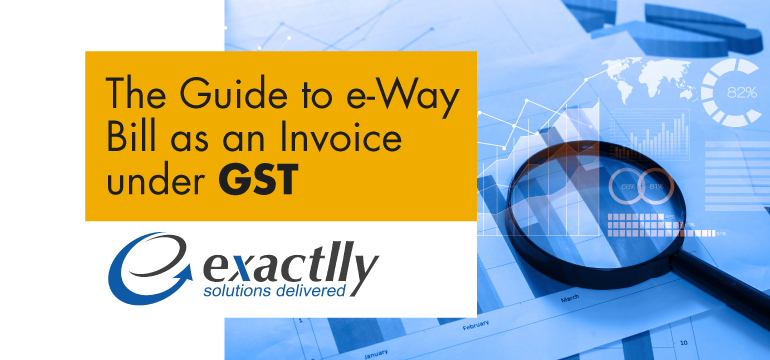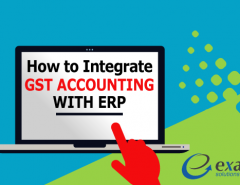As a federal nation, the Constitution has empowered the central government to levy taxes and duties on manufacturing and providing services. State governments do this by way of charging taxes on interstate sale of goods and services where goods are being transported between several states and therefore fall under several jurisdictions. In case of such interstate movement, the central government has the authority to impose taxes on these sales and the revenue so generated shall be shared between the centre and the state.
However, the challenge of monitoring and regulating the movement of these goods interstate as well as intrastate has been burdening the government due to tax evasion and leakage of excess revenue to several states. States have check posts along their borders in order to keep these issues in check for the purpose of monitoring the movement of goods and ensuring that adequate taxes and duties have been paid on the goods so transported. Officers along these posts are required to check and inspect documents such as tax invoices, delivery challans, road permits, waybills etc.
Under the current/erstwhile indirect tax regime, various states have employed various methods of checking tax evasion on the movement of goods. Some states mandate that the registered dealer declare the good details such as the value of the consignment upon transportation while obtaining requisite permit forms and waybills. Other states have a requirement for the transporter to obtain a transit pass or a declaration form for the transport and movement of goods.
With the advent of technology, the concept of digitalizing procedures for the movement of goods intrastate and interstate have become popular. Karnataka introduced the e-Sugam wherein a registered dealer is required to upload details of the consignment upon which he shall be issued a reference number. Such details are required to be uploaded in case the value of the consignment is higher than INR 20,000. The reference number obtained may be shared with the transporter who can they convey the same at the check posts instead of carrying physical copies of invoices. Several other states have also initiated such a digital process where details of the consignment can be shared electronically, eliminating the use of physical bills.
Under the GST regime, the digitalization of invoices has taken on a new concept altogether – by introducing the electronic waybill or e-way bill. This is a unique bill number that is generated for a consignment having a value of INR 50,000 or higher. We have answered a few questions regarding the application and generation of the e-way bill as follows –
| Contention | Description |
| Applicability |
Applicable when the consignment value is for INR 50,000 or more; also, applicable when there is an inward supply of goods from a person who is not registered.
|
| Generation | Prior to the commencement of movement of the goods. |
| Who Can generate |
Supplier or recipient in case goods are being transported by a registered person (consignor or consignee) in his own or hired vehicle; Transporter in case of goods being handed over to the transporter while the registered person declares the details of the goods on the GST portal; Recipient or the transporter in case of inward supplies received from an unregistered person. |
| Form Filings | Form GST INS-1 where details of goods furnished are to be provided in Part A and details of the transporter are to be provided in Part B |
| Generation of the bill for a value less than INR 50,000 | A registered person or transporter may issue a bill in this case although the same is not mandatory. |
| In the case of transportation of multiple consignments in a single-vehicle | A consolidated e-way bill by way of Form GST INS-2 is required to be generated – this form contains the separate serial numbers of all e-way bills for each consignment. |
| Reference Number |
A unique e-way bill number or an EBN is generated as a reference number to the supplier, recipient and transporter.
|
| Goods transported from one vehicle to another in transit | Upon making such a transfer of the goods from one vehicle to another, a new e-way bill is required to be generated by way of Form GST INS-1 |
| E-way bill not generated |
It is mandatory to generate an e-way bill by way of Form GST INS-1 based on the tax invoice, bill of supply or delivery challan; The e-way bill can be cancelled on the GST portal electronically within 24 hours of it being generated. In case it is already verified, it cannot be cancelled. |
| Who will the e-way bill be made available to | In case the recipient is registered, the details of the e-way bill will be made available to him and within 72 hours of receiving such an e-way bill, he is required to either accept or reject the consignment. If the recipient has not accepted or rejected the e-way bill within 72 hours, it shall be deemed as accepted. |
| Generation through Another Medium | The generation of e-way bills will soon be made available through short message services as well. |
Process of generation of the e-way bill –
As an illustration, let us take F&M Clothing, a registered dealer in the state of Maharashtra. F&M Clothing has entered into a contract with Lara Fashion based in Madhya Pradesh for an outward supply of goods. The consignment is valued at INR 50,000. The transport of the goods is being undertaken by Vishnu Transport. The process is as follows –
- F&M Clothing hands over the consignment to Vishnu Transport for delivering the same to Lara Fashion;
- F&M Clothing fills out the details of the consignment in Form GST INS-1 Part A regarding the transporter, Vishnu Transport;
- Vishnu Transport generates an e-way bill based on the information uploaded in Form GST INS-1 by F&M Clothing and a unique e-way bill number is provided to F&M Clothing, Vishnu Transport and Lara Fashion;
- The details of the e-way bill are sent to Lara Fashion for acceptance.
Validity of the e-way Bill –
The e-way bill is valid for a limited period depending on the distance travelled for the movement of the goods. The validity period begins from the moment the e-way bill is generated and such period may be extended by the commissioner in case of certain classes of goods as per any notification issued.
| Distance Travelled | Period of Validity |
| 100 km or less | 1 Day |
| Between 100 km and 300 km | 3 Days |
| Between 300 km and 500 km | 5 Days |
| Between 500 km and 1000 km | 10 Days |
| 1000 km or more | 15 Days |
Inspection, Verification and Documents required –
The transporter of the consignment or any other person in charge of conveying the consignment is required to mandatorily possess the invoice or bill of supply or the delivery challan as well as a physical copy of the e-way bill or the e-way bill number at all times. Upon being verified, the officer also has the right to stop and search any vehicle in relation to the e-way bill or e-way bill number – this is applicable for both interstate and intrastate movement of goods.
Any vehicle being used to transport consignments on a regular basis may also install a radio frequency identification device. Installing this device eliminates the need for the person in charge of the vehicle to carry physical copies of the e-way bills as the device is attached to the vehicle and the e-way bill can be mapped and verified through the device itself upon verification. For some transporters (particular classes as notified) this device is required to be mandatorily fixed.
Any vehicle may be physically inspected in case the officer is doubtful regarding tax evasion – such inspection may be carried out upon obtaining approval from an authorized commissioner. In case such physical verification is carried out once, it will not be done again, even in a different state, unless further information pertaining to tax invasion has been received. Upon inspection, the officer is required to record all details of the inspection carried out within 24 hours by way of Form GST INS-3 in Part A and the final record of the verification needs to be recorded in Part B of the same form within 3 days. Form GST INS-4 must be mandatorily filled out in case the vehicle in question has been detained and searched for over 30 minutes.
With the advent of the GST regime, statewide documentation will not be required for the movement of goods, and this process will become simple and convenient through the e-way bill, giving traders a boost. Further, verification at check posts will be managed better and ease in faster movement of goods both intrastate and interstate. Want to know more about Exactlly? Feel free to Contact Us and get a Free Demo.







Hi,
Thanks for the this good information